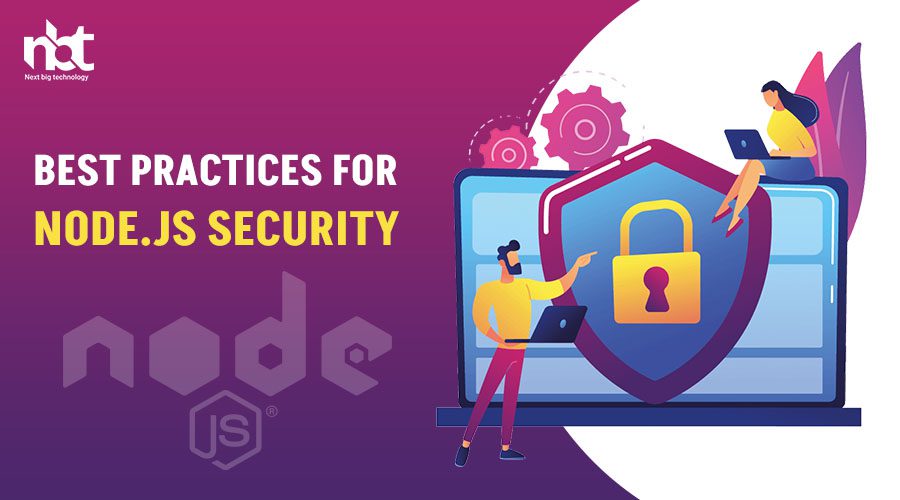Chrome uses the same V8 JavaScript engine that Node.js does. Due to its asynchronous event-driven JavaScript-based runtime, Node.js is a popular platform for making network-driven apps that are light and scalable. Node.js apps are easy to make bigger or smaller, both horizontally and vertically. Node.js is used to make apps for both clients and servers. It has a production environment and model for open-source JavaScript runtime that includes caching of individual modules. Because of this, we think Node.js will become even more popular in the coming year.
Table of Contents
Adding Subsequent Elements
Because layering is essential, each part is built on more than one level. Node.js suggests that each of these layers should have objects that can be used in the code that handles web requests, logic, and data access. This makes it easy to tell the difference between the production and test environments, which is especially helpful when isolating problems with performance.
Start a completely new project with NPM.
When you run NPM INIT, a package is created right away.
After you add packages and node apps, the JSON file made by npm install can tell you about your project.
App Error Handling
Promises and Async-await
The callback hell problem happens when developers don’t follow best practices and use asynchronous functions in JavaScript instead of synchronous ones to handle errors when two things happen simultaneously. The existing libraries or async and await in JavaScript may be able to fix this speed issue. The process manager will use the promise function to handle errors. It makes the code easier to read and simpler.
Also read : Top Node.js Development Trends for the Year 2022
Taking Charge of Mistakes
All APIs, night jobs, and unit tests should be able to debug messages and call this method if an error happens so that the logic for handling errors (like logging performance or sending emails about the error) is the same for all of them.
The Request Body’s Validation
Developers can use open-source libraries like Joi to check if the request body is correct and free of threats. For example, before doing any logic, we may check that all request and body parameters match the intended schema. So, we can stop logic from being run if a user enters something that isn’t correct by showing an error message.
Using an internal error reporting system
Developers can also use a wide range of different ways to report and deal with errors. For example, they can work with strings or make up their types. Thanks to the Built-in error object, our programs, and other open-source JSON packages can handle problems the same way.
Advice on how to write code that works well with Node.js
Use software for lining
For example, ESLint is one of several linting packages used to find programming errors and ensure that your code follows industry standards and best practices. It looks for alignment issues and code patterns that could make apps less secure or cause them to crash.
Call Out Your Duties
You can use all possible functions, such as closures and callbacks. It is possible to limit access to anonymous functions. Make sure to use Naming whenever you can. When you have a name for something, it’s much more manageable. Get a snapshot of how memory is being used.
How to Name Constants, Variables, Functions, and Classes
When declaring constants, functions, variables, and classes, always write their names in lowercase. No short forms should be used; only the total words everyone knows should be used. Each word should have a space between them.
The best ways to keep your Node safe.
Application in JS
You can keep people from getting into your Node.js application by taking the following steps. If you’re worried about your Node.js application’s safety, you’re in the right place. We made sure to include all of the best practices from the Open Web Security Project (OWASP) for fixing standard security holes. Here are some tips on how to make your web application safer.
Add an add-on for lint.
When writing code in Node.js, we can use linter plugins like eslint-plugin-security to find security vulnerabilities and security plugins.
Denial-of-service attacks can be stopped by using middleware.
This is how we know our node app is vulnerable to a DOS attack: when real users don’t get the service they expect or get noticeably worse service than expected.
Limit what SQL injections can do.
When JS strings and string concatenations are used a lot, it is more likely that a database will be changed. Therefore, using this method makes your app more vulnerable to SQL injection attacks and risks your data’s accuracy.
Security of Data in Transmission
A top priority is ensuring that our application’s data is safe and private while in transit. Unfortunately, some encryption misconfiguration in the tested infrastructure is one of the main things that makes our data and privacy less secure.
Take Charge of HTTP Headers
Set up safe HTTP headers to protect your node.js apps from clickjacking, XSS attacks, and other web-based attacks. The helmet plugin is easy to set up, and we can use it to make our own rules for protecting Node.js applications.
Also read : How to Hire the Best Node.JS Developer for Your Project? A Guide
Front-end assets based on Node
Due to its single-thread model, the Node’s speed slows down when it deals with many static files. Therefore, it is recommended that these files be stored in a different place, such as S3, a content delivery network (CDN), etc.
Front-end assets should not be kept on the node server but in a separate repository.
Use software that automatically looks for holes.
Even popular dependencies like Express can have security holes. Commercial and open-source technologies that watch the system in real-time for vulnerabilities and send alerts when they find one make it easy to fix this problem.
Switch NODE ENV to produce
NODE ENV should always be set to “development” or “production” to show if production optimizations should be turned on or off. Many npm packages automatically check the environment and try to make their code work best in production based on this information.
Use the Long Term Support (LTS) version of Node.js when you can.
By sticking with a Node release with Long Term Support, you can be sure that you’ll get essential fixes, patches, and improvements to the system’s security and performance for a longer time. Therefore, you should use the LTS version of Node.js unless there is an excellent reason not to.
NPM CI should always be used when installing packages.
When installing packages, ensure the exact versions are used in both development and production. So, if you run npm ci, all the dependencies listed in package-lock.json and package.json will be installed without your permission. Use this command if you work in a robotic environment, like a CI/CD pipeline.
Conclusion
We made a list of the industry-standard best practices we follow to ensure that all aspiring Node.js developers use them from the start of their development journey and make high-quality production apps. Even experienced programmers who want to improve at Node.js can benefit from following these rules. Following specific coding standards, style guides, and methods can quickly improve your app’s work.
Thanks for reading our post “Best Practices for Node.js Security”, please connect with us for any further inquiry. We are Next Big Technology, a leading web & Mobile Application Development Company. We build high-quality applications to full fill all your business needs.












